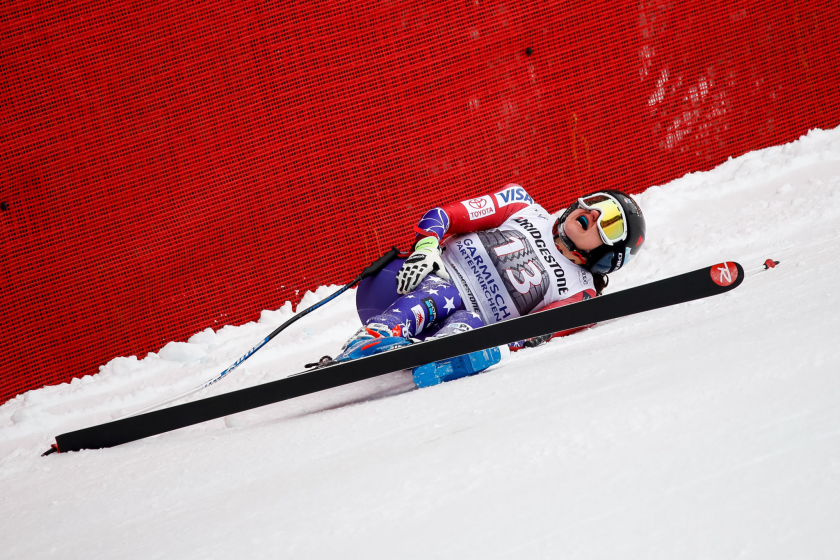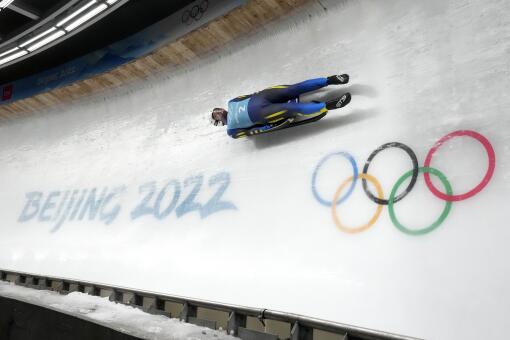
- Share via
BEIJING — Tommy Ford emerged from the swirl of snowflakes and low-slung clouds that transformed the treacherous giant slalom course known as the Ice River into a maze.
He shot through the finish, skidded to a stop in a spray of white and, for a moment, absorbed the scene at the Yanqing National Alpine Centre on Sunday as whining leaf blowers cleared snow from the grandstands and course workers scrambled to repair the run before the next skier started.
He had finally returned.
Four hundred days had passed since Ford’s last race ended in a devastating crash he still can’t remember. On a day when snow piled up at the Winter Olympics and simply making it down the mountain without incident was an accomplishment, the 32-year-old took a significant step in a recovery that has tested his body and spirit.
“It’s like riding a bike,” Ford said after his first run. “It was pretty familiar. I felt comfortable and ready to charge.”
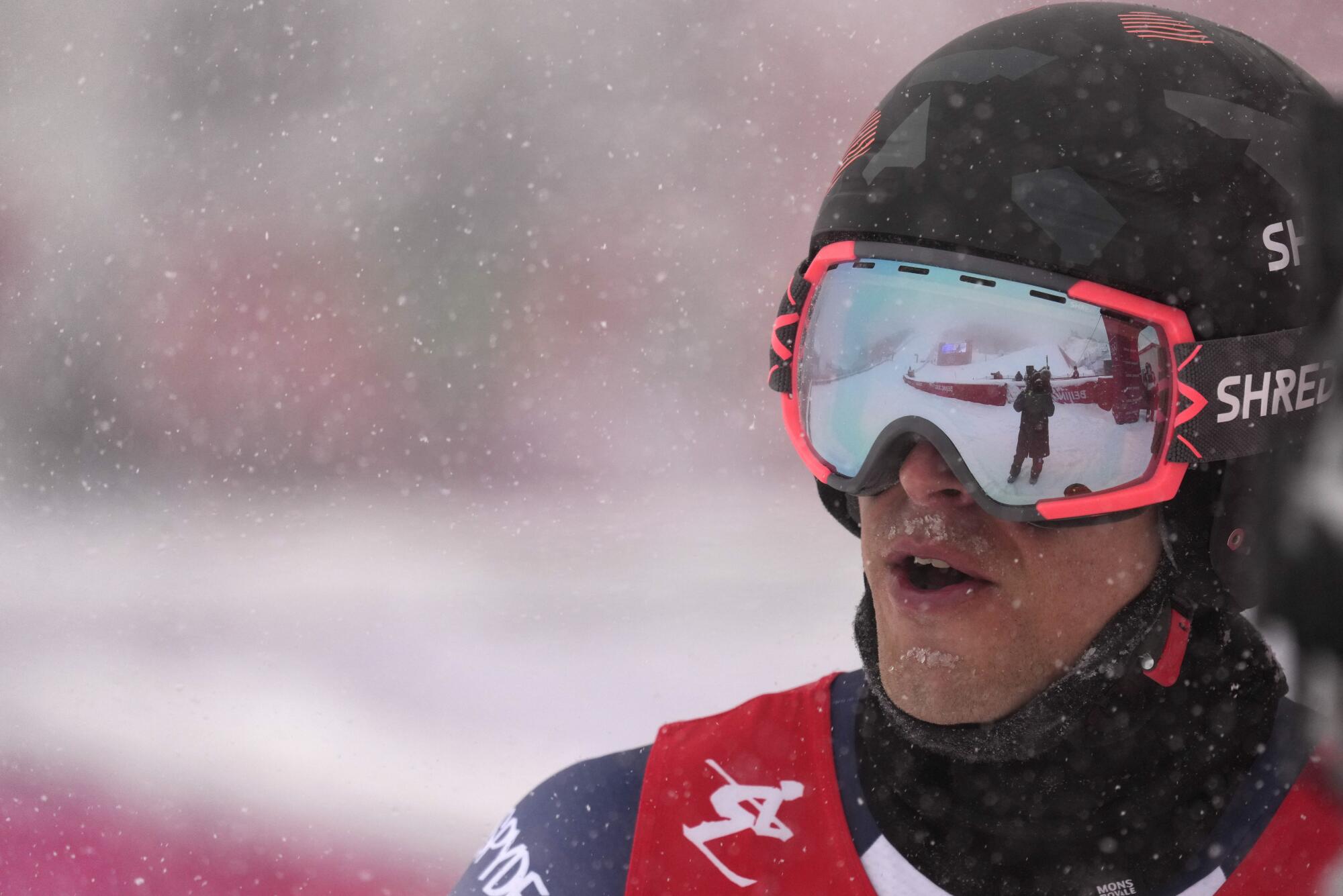
Behind the unassuming words, however, there’s a painful, winding path to his third Olympics.
Near the finish of the giant slalom in Adelboden, Switzerland, on Jan. 9, 2021, Ford collided with a gate at full speed, banged into the snow headfirst, tumbled down the slope for three seconds and bowled over two course workers before coming to a stop. He had found a rhythm on the World Cup circuit in previous months, twice reaching the podium in 2020. Now he lay motionless in the snow as emergency personnel rushed over in a stomach-turning scene, even by the standards of a sport in which violent crashes are commonplace.
Ford had been knocked unconscious and had a concussion. Two ligaments were torn in his right knee, plus he had a shredded meniscus and broken tibia plateau. His left wrist was broken too.
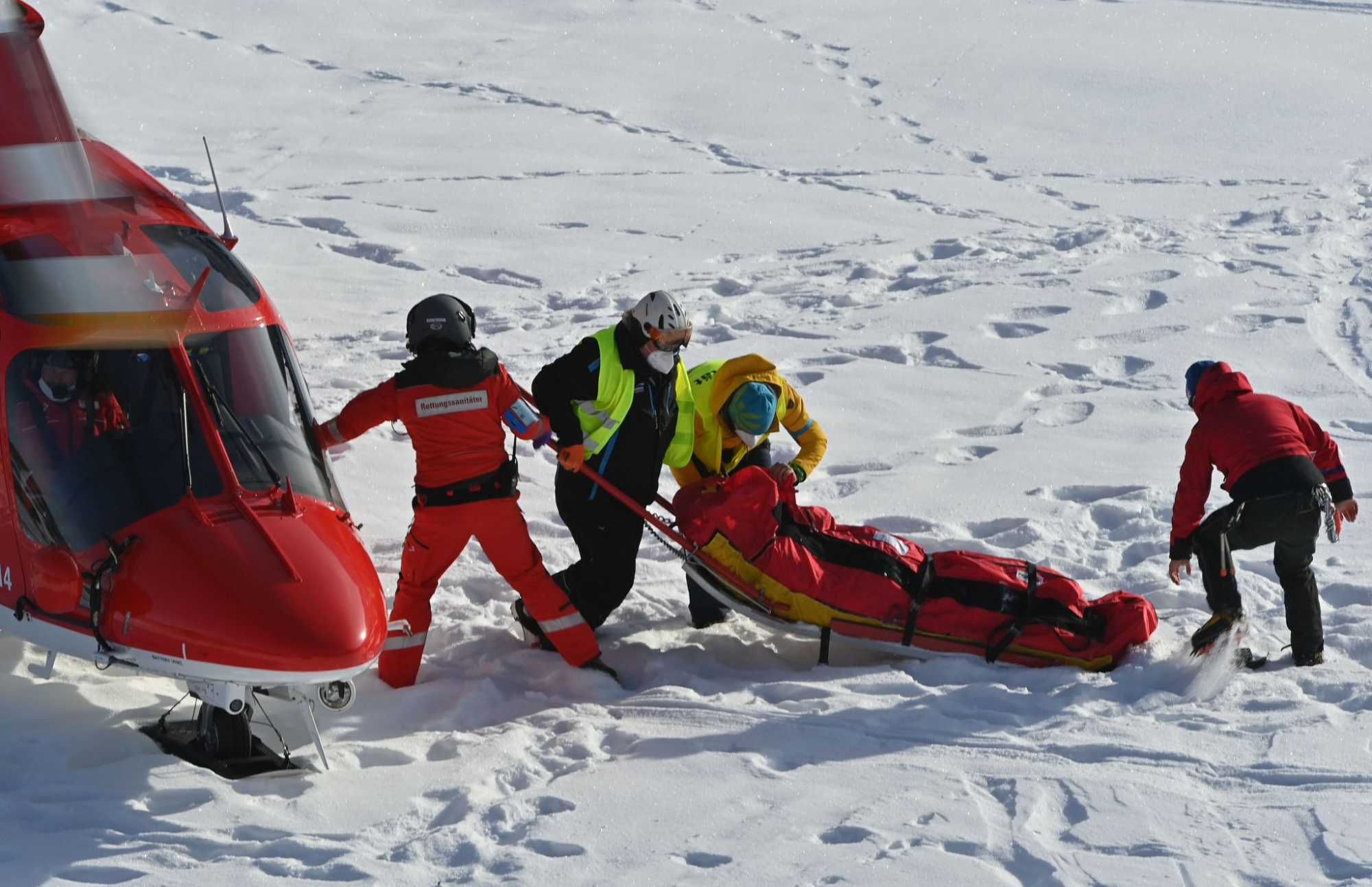
His girlfriend, two-time Olympic speed specialist Laurenne Ross, helped him though the early days in Switzerland, then his brother, Tyson Ford, served as his caretaker for several weeks following surgery in Colorado.
“He had a lot to continue to process,” Tyson Ford said. “For an athlete, sitting around is a hard thing to do. I think he definitely had to work through that and get strong physically and get stable, but also just to stay strong mentally.”
Tommy Ford needed four surgeries, in all, to piece his body back together. That was only part of the equation. The concussion left him with memory loss and mood swings. His left eye doesn’t follow motion correctly. Most of the time his head feels normal. Then it doesn’t.
Ford returned to snow in November — skiing was less painful than walking — but that small step was a long way from being able to race at a world-class level.
Olympic skiers must endure falls and crashes, often leaving them with gruesome and painful injuries. But in their minds, the reward is worth the risk.
“There were many times of doubt,” Ford said. “Every phase of the rehab I’ve had for the last year it was like, ‘Oh, man, I don’t know if I’m going to get better or even get to the point where I’m fast enough for the Olympics.’ But then I recover and it turns out to be pretty good.”
He finally watched video of the crash in December. In a subsequent post on Instagram he acknowledged being consumed by depression during the recovery. He struggled to look at himself, struggled with motivation, struggled to stay positive. Books and video games provided an escape. Ross helped him “wake up a bit.”
“It hasn’t been all gloom, but it’s inevitable, in a sense, with having a traumatic injury,” Ford said.
He started training with gates the same month and, in late January, the day after another session at Mt. Bachelor near his home in Bend, Ore., he learned he would be one of six men on the U.S. Olympic Alpine team. There was a catch. Ford contracted the coronavirus a couple of weeks earlier. He recovered after feeling ill for a few days but was still testing positive. But the positive tests soon turned negative and the last obstacle to the Winter Olympics had disappeared.
Ted Ligety, the two-time gold medalist and one of the greats in the giant slalom, believed Ford has a knack to compete at a high level without months of training and high-level racing that is a virtual requirement in the lead-up to the Games.
“He had this sneaky ability to come off of training where he’s in complete oblivion and then actually have opportunity to go for a medal,” Ligety said. “He has that ability to funnel that muscle memory, that skiing ability that is locked deep inside and just bring it out for two runs and then tuck it back away.”
That’s what happened Sunday when the unusual snowstorm overwhelmed a mountain that receives an average of less than 8 inches of snow each year. At least 4 inches had fallen by the time the first run started. Lines of blue dye marking the course vanished. Visibility plunged to almost nothing. The snow kept falling.
The conditions challenged every competitor. But someone who hadn’t raced in more than a year? The task could be viewed as impossible. Ford could see the blue and orange gates during his first run, but that was it. He joked that he used Jedi mind tricks to navigate to the bottom.
“It’s really special,” said teammate River Radamus, who considers Ford to be a mentor. “Seeing everything he’s gone through in the last year to come back here, I know he’s earned this moment.”
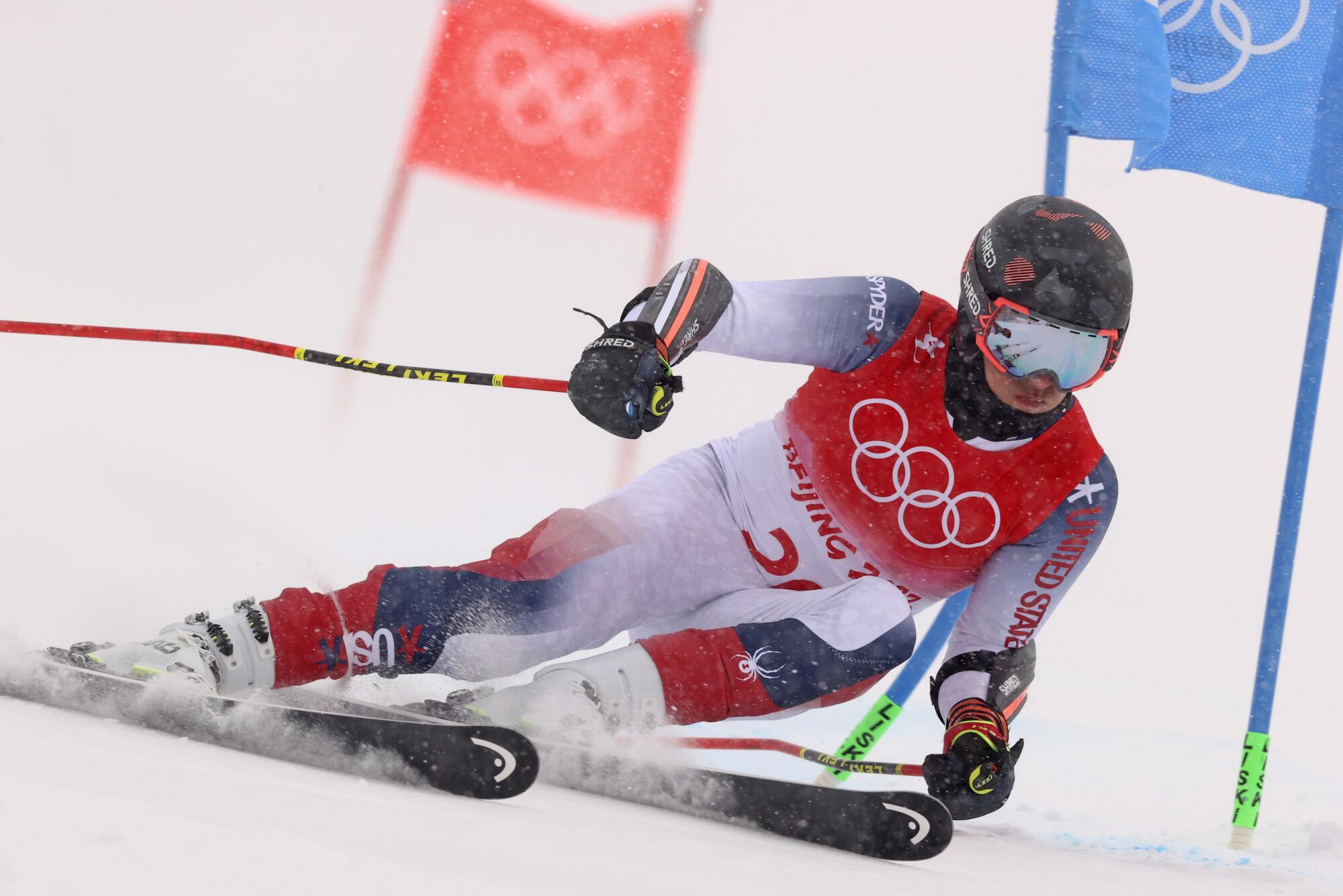
The snow slowed later that afternoon. The remaining skiers could finally see the course after a 75-minute delay before their second runs.
Radamus, who turned 24 last week, finished fourth, just missing out on medaling in the event won by Switzerland’s Marco Odermatt. Ford came in 12th in really a bigger victory than any place could convey.
“The ligaments are pretty crazy,” he marveled. “It’s crazy that they can repair them and put them together in a way you can use them on a day like this when you can’t see anything.”
Amid the tiny, icy flakes of snow that accumulated on every surface — walls, phones, hats, beards, walkways, notebooks — Ford looked as if he had returned home.
More to Read
Go beyond the scoreboard
Get the latest on L.A.'s teams in the daily Sports Report newsletter.
You may occasionally receive promotional content from the Los Angeles Times.
